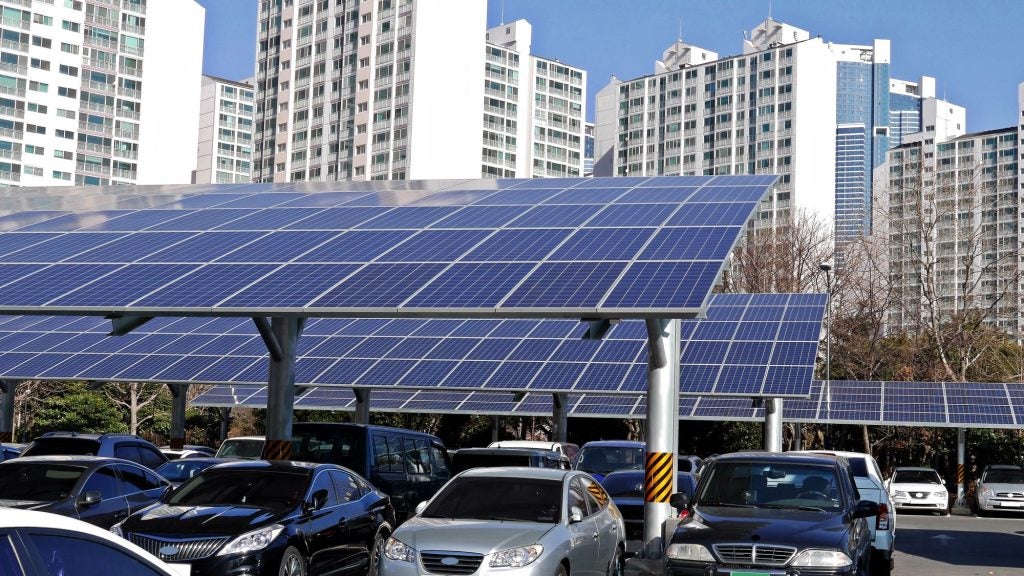
In 2005, the Chinese government passed a landmark Renewable Energy Law, making the continued expansion of renewable energy throughout the country a national priority.
According to a special report compiled by the independent researcher Worldwatch Institute, the move included ramping China’s current 8% of energy and 17% of electricity generated from renewable sources up to 15% and 21% by 2020. If any further evidence was needed to prove just how serious the world’s fourth-largest country is taking its development of renewable energy, in 2007 alone China invested $12bn on renewable energy – a level of investment almost parallel to Germany.
Given the nation’s immense size, such a policy is highly ambitious and symbolises a growing realisation that future energy needs belongs in the hands of renewable sources. By becoming the first developing country to instigate such a prominent renewable energy action plan, China resides in the unique position of being able to leapfrog industrialised nations.
Additionally, China’s diverse geography throws it open to a rich array of renewable sources, such as wind, solar and biomass. Potentially, China could be capable of developing renewable energy on an unprecedented scale in the years ahead.
A starker reality, however, is also behind China’s adoption of renewable energy. In 2006, the nation’s energy use was already the second highest in the world, having increased a staggering 75% in the last decade. Its role as a ‘factory to the world’ has meant it relies on large amounts of energy to make goods that are consumed abroad – ultimately creating energy consumption on a scale that has never been seen before.
At the heart of the energy consumption is a potentially devastating dependency on coal, which provides for 80% of the nation’s electricity, and a growing reliance on oil. The widespread availability of automobiles – the amount of cars on Chinese roads increased from 10 million in 2000 to 29 million in 2006 – being largely responsible for the increase in the latter.
How well do you really know your competitors?
Access the most comprehensive Company Profiles on the market, powered by GlobalData. Save hours of research. Gain competitive edge.

Thank you!
Your download email will arrive shortly
Not ready to buy yet? Download a free sample
We are confident about the unique quality of our Company Profiles. However, we want you to make the most beneficial decision for your business, so we offer a free sample that you can download by submitting the below form
By GlobalDataAll this has created some of the worst pollution in history. According to one estimate, only 1% of China’s 560 million-strong urban population breathe air that meets EU air quality standards. Such air pollution is not solely a regional problem either. Acid rain has begun to threaten populations and ecosystems throughout Asia, particularly in Japan and Korea.
Experts predict that China is well on its way to becoming the world’s largest contributor to global climate change and that the country’s total emissions of carbon dioxide could soon exceed that of the US. Unsurprisingly, the nation is now under fierce pressure from the rest of the world to reduce its carbon dioxide emissions.
Attracting global interest
All these factors combined have contributed to making China a focus area for the global renewable industry. Interest from overseas in China’s manufacturing of renewable energy technology – in particular wind turbines – and in the demand created by its large-scale investment is becoming increasingly evident.
The Renewable Energy Association (REA), which represents renewable energy producers and promotes the use of sustainable energy in the UK, has witnessed significant interest in the Chinese market from its members. REA board member Philip Wolfe has identified two ways in which the country is benefiting the western market.
“China is increasingly raising its profile as a supplier of renewable energy products with our members,” he explains. “It is also an emerging market for our members that operate on an international platform.
“Certainly China is a rapidly developing country for renewables and is also becoming a very important supplier of renewable energy products, in particular with regards to the development of wind turbines and photovoltaic cells.
“There has been a lot of new manufacturing established over there, usually under the licence of a European or American manufacturer – so we could see it becoming an increasingly important market on the supply side as well as on the market demand side.”
Wind and solar power looks set to play a major role in China’s renewables revolution. Out of the two, wind power is the fastest-growing power generation technology in China – having doubled its capacity in 2006 alone.
According to the WorldWatch Institute, the country possessed more than 50 aspiring domestic manufacturers of wind turbines and a number of foreign producers in 2007.
Solar power on the other hand remains in relative infancy throughout China, although a growing amount is emerging in rural areas and other off-grid locations. On the manufacturing side, however, China is third only to Japan and Germany in terms of producing solar photovoltaic (PV) cells and huge industry investment is expected to continue into the foreseeable future.
Dipping toes in solar water
Another interesting development with regards to solar technology is the country’s position as the world’s largest market for solar hot water. With over 40 million solar hot water systems, more than 10% of Chinese homes now rely on the technology to heat their water.
“Wind and solar have been two subdominant technologies in China,” Wolfe says. “I think they have identified areas where they can leapfrog the Western world.
“Historically in Europe, we have built well-established electricity grids throughout each country, while in China there are still parts of the country without that infrastructure. They may well decide to jump that stage and instead have a more decentralised energy system based on renewables.
“Similar decisions have been made in India, where they are tending to build up local mini grids based of renewable sources as opposed to going down the route of having large-scale infrastructure.”
Other renewable sources such as biomass power and biofuels for transportation will also play their part in China’s future. Biomass power in China mainly derives from sugarcane wastes and rice husk, but new policies may see agricultural and forestry wastes also join that equation. With a rapidly increasing number of automobiles filling Chinese roads, biofuels are receiving widespread attention in China.
While modest amounts of ethanol is currently produced from corn and small amounts of bio-diesels can be made using cooking oil waste, the government plans to expand biofuel production from cassava, sweet sorghum and oilseed crops. Great hope is also placed on cellulosic ethanol, which if it were to become commercially viable within the next ten years could lead China to become a major ethanol producer post 2020.
The Worldwide Institute’s special report – which was used to advise the Chinese government on its renewable energy policies – says it believes that it is likely China will meet and even exceed its renewable energy development targets for 2020.
It predicts that China’s total power capacity from renewables could reach 400GW by 2020, with hydro, wind, biomass and solar PV power making the greatest contributions.
However, it also says such an outcome will depend heavily on a number of factors, including the development of China’s domestic industry sector, the reduction of technology costs, a continued aggressive policy from the government and an allowance for distributed power generation by electric utilities.
This has not stopped the Renewable Energy Association though has paid tribute to China’s current push. “I think China should be recognised for the steps it is making in the renewable sector as it is already employing a far higher level of renewables in terms of total energy consumption than most countries,” Wolfe says.
“The UK, for example, is heavily reliant on fossil fuel and coal generation, while China is industrialising very fast and the knee-jerk reaction would be to follow the path that the Western world went down. Instead it seems to be choosing its own path.”







